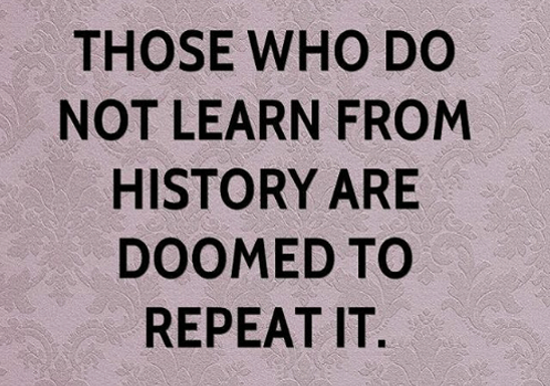Of the seven continents in our world, Europe is the second smallest, but in terms of its historic significance, it continues to play an outsize role in planetary events. The two worldwide wars of the 20th century resulted from tribal conflicts among Europe’s national groups. And once again in the last few days, we have seen a re-emergence of patterns that preceded the Second World War.
Nazi Germany’s claim of representing all Germans led to the Sudetenland Crisis of 1938. Adolf Hitler proclaimed that he was protecting the German-speaking peoples living in the border areas of Czechoslovakia from genocide at the hands of the Czechs. Vladimir Putin is doing the same in the Donbas provinces (Donetsk and Luhansk) in Ukraine where the majority of people are Russian-speaking. In both cases, the actions of the bullies have been predicated by claims that those they represented were being subjected to persecution.
Hitler’s Wehrmacht was the most powerful military in Europe by the fall of 1938. Hitler used this as an overhanging threat throughout the Munich conference that led to the dismemberment of Czechoslovakia. Putin’s Russia has amassed an overwhelming military force in proximity to the Ukrainian border and despite diplomatic efforts by European heads of government, and those in the United States and Japan, and despite the threat from all of these to apply broad economic sanctions, he has made his first geopolitical strategic moves to peel off Eastern Ukraine and move peacekeeping forces across an internationally recognized border. It is a move that is just short of war, one that would be a battle of unequals, similar to the move perpetrated by Germany in September 1939 on Poland. Unlike Hitler, Putin is making his move in the guise of peacekeeping.
The other big difference between Germany in 1938 and 39 and Russia in 2022 is the latter’s massive nuclear arsenal. Putin has made it quite clear in a recent speech that the descent to nuclear war could be inevitable if his demands are not met.
As a student of history, it is hard not to notice the obvious parallels in what is playing out once again on the eastern edge of the European continent. It was Jorge Agustín Nicolás Ruiz de Santayana y Borrás (George Santayana as he was known in the United States and Great Britain) a Spanish-born philosopher and historian, who is credited with being the first to say, “Those who do not learn from history are doomed to repeat it.” I’m not sure this is true because one can find similar statements dating all the way back to the Peolopynesian Wars fought among rival Greek city-states and alliances back in the fifth century BCE.
Adolf Hitler is probably the most well-known example of someone who didn’t learn from history when he launched a second front assault on the Soviet Union in 1941 before defeating the United Kingdom. He repeated the same behaviours as Napoleon Bonaparte who, unable to conquer the British turned his Grande Armée on Russia instead. Inevitably, the German leader followed Bonaparte to defeat.
Ignorance of history can be found all around us. Just look at recent headlines. The so-called “Freedom Convoy” that occupied the centre of Ottawa, Canada’s capital for four weeks, and that inspired similar acts at key border entry points between the United States and Canada, bore a resemblance to the January 6, 2021 insurrection displayed in Washington, DC. Both chose similar symbology: Confederate flags, swastikas, and yellow Jewish stars. In proclaiming personal freedom they used symbology that was quite the opposite.
I am a great advocate of Santayana’s statement. Although I never got the opportunity to teach history after graduating from university, I remain an attentive student of it. My approach to describing scientific achievements and technological innovation always is seen through a historical lens. The same is true when I prognosticate about what lies ahead in the future.
Russia’s playbook in Ukraine is history repeating itself in the most obvious ways. It hardly varies from similar acts in 2008 and 2014.
- In 2008, Russia launched a war to protect the Russian-speaking minorities found in the independent post-Soviet nation of Georgia. The invasion was preceded by Russia recognizing two self-proclaimed republics in South Ossetia and Abkhazia, both lying within Georgia’s international borders.
- In 2014, after the overthrow of a pro-Russian government in Ukraine, Russia claimed that the Russian-speaking majority in the Crimean peninsula was under threat. This time they didn’t wait for Crimea to self-proclaim independence. They just invaded.
Both cases have led to diplomatic censure and economic sanctions from members of the international community. The sanctions have done nothing to reverse the outcome of Russia’s acts, and today, the country is well on its way to establishing a greater Russian state that bears a striking resemblance to the former Soviet Union.
In the Europe of the 1930s, Nazi Germany played the same game.
- First, it absorbed German-speaking Austria.
- Second, it bullied the European governments of the day to allow it to absorb German-speaking Sudetenland
- And third, when its bullying tactics didn’t restore to Germany a part of Poland that divided East Prussia from the rest of the country, launched an invasion that led to the Second World War.
And now we face nuclear-armed Russia led by a leader who continues to display the same pattern of deception and bullying that by now should be obvious to the rest of the nations of Europe and the world.
History repeats. What have we learned?










nice information its usefulness and significance is overwhelming the way you covered all the basic necessary information is really impressive good work keep it up